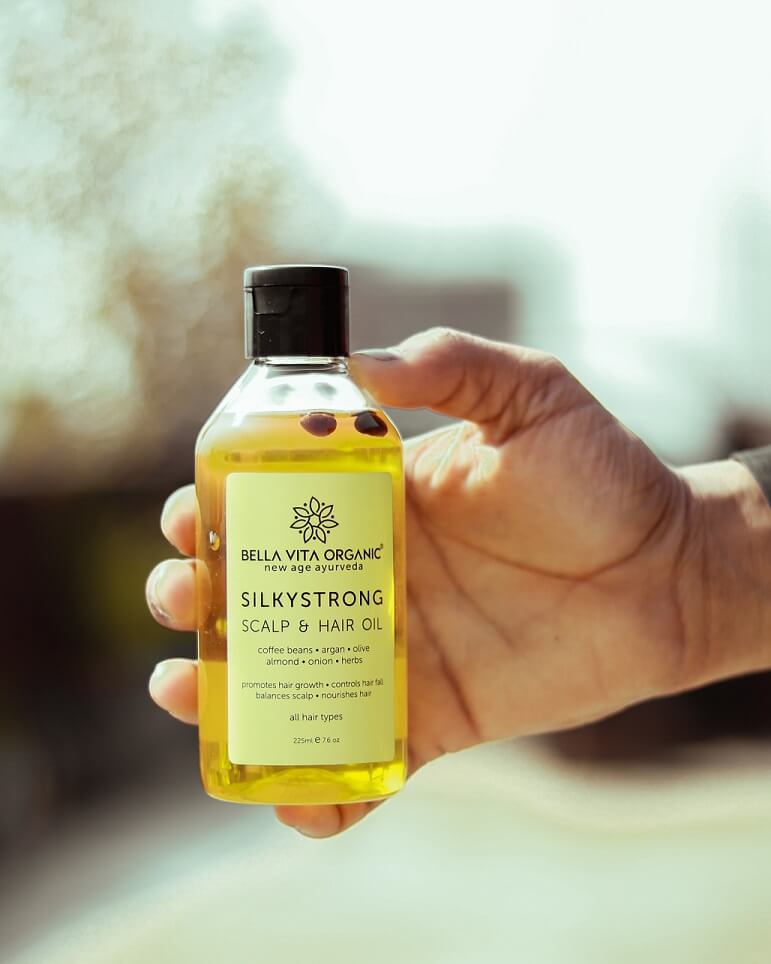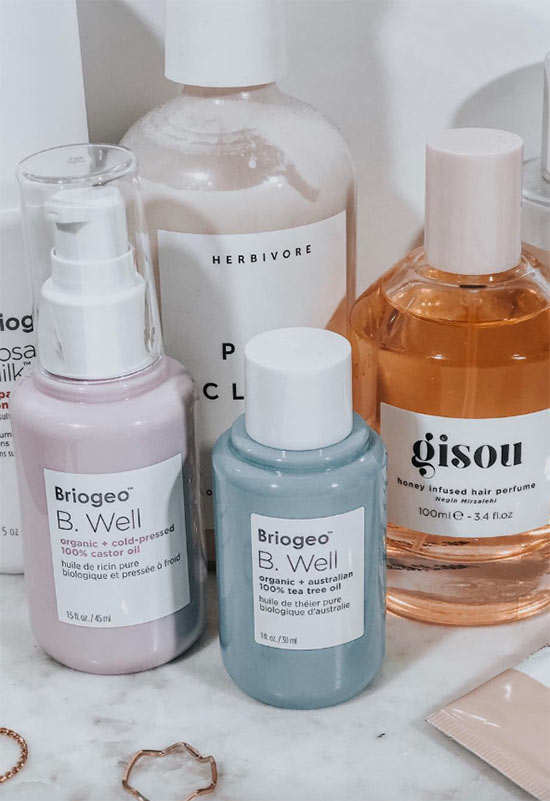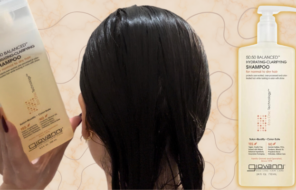Having a dry scalp is never a pleasant experience, and dealing with it can be pretty confusing. To help anyone with flakes or feeling an itch, we put together a list of the nine best ways to get relief from a dry scalp.
To give you current, evidence-based advice, we enlisted the expertise of Gaby Longsworth, Ph.D., certified hair practitioner and owner of Absolutely Everything Curly, and William Gaunitz, certified trichologist and founder of Advanced Trichology. With their help, we’ll uncover why you might have a dry scalp and explain how to tell the difference between regular dryness and specific skin conditions.
What causes a dry scalp?
Lack of sebum production can impact the skin all over your body, including your scalp, making it hard to retain much-needed hydration. “Your head loses too much water or moisture, which can cause itching and flaking of the skin,“ Longsworth said.
This type of dryness is often genetic and also corresponds with age. In other cases, a dry scalp might result from external factors like the products you use in your hair or even the weather. If your skin isn’t dry, your scalp may seem tight, flaky, and dehydrated, but it still seems to produce a lot of oil.
According to Gaunitz, nutritional deficiencies can also be the culprits behind scalp dryness. “The most common are vitamin deficiencies related to low vitamins B6 and B12, vitamin D3, zinc, and omega-3s,” he told Glowsly.
Finally, what seems like a dry scalp can be a sign of a different scalp condition, like dandruff or psoriasis, which may require a more targeted approach.
Dry scalp vs. other conditions
It’s important to differentiate between a dry scalp and a scalp disorder to best tailor your treatment plan to your specific situation. According to Gaunitz and Longworth, the main conditions that can lead to dryness are dandruff, seborrheic dermatitis, and psoriasis.
The key to telling the difference is looking at the type of flakiness and quality of the rest of the skin. “True dry scalp does not represent itself as flakes to the naked eye,” Gaunitz explained. “It may look ashy or extremely smooth under the microscope.”
Longworth added that a dry scalp can also feel tight and itchy, although not to the same extent as other conditions. Dandruff and seborrheic dermatitis are both associated with yeast overgrowth. Some experts even view them as the same condition but at different levels of severity.
“It’s important to look for visible, large flakes on clothing or in the hair, as well as the presence of inflammation and itchiness beyond the scalp to other parts of the body … Seborrheic dermatitis is more severe than dandruff,” Longworth said. Gaunitz added that seborrheic dermatitis often presents with larger, yellow flakes, while dandruff flakes are often more white in color.
Psoriasis, on the other hand, is an autoimmune disorder. Its key signs are inflammation and scaliness. “Scalp psoriasis is a chronic inflammatory disease that causes red, scaly patches on the scalp and other parts of the body,” Longworth said. “[It’s a] more severe condition than dandruff and can cause dry, dandruff-like flakes that are more scaly than flaky.”
Dry scalp fixes to try
We’ve put together a broad range of options for dealing with a dry scalp based on how it presents itself and the potential causes.
1. Wash less… or more
If you think your washing routine is responsible for your dry scalp, try reducing how often you shampoo. While those with an oily scalp will benefit from washing their hair daily, a dry scalp doesn’t need such frequent cleaning — especially if you also tend to heat style your hair. Aim to wash your hair every other day at most and as infrequently as once or twice a week.
That said, there’s nuance here. If you’re dealing with dandruff, dead skin buildup, or excess oil production, shampooing might actually make your scalp seem less dry. That’s why understanding the exact issue is so important.
2. Switch to a gentler shampoo
Another option is to switch to a gentler shampoo for dry hair, especially if your scalp is prone to dehydration but still gets oily. You’ll still be able to shampoo at a frequency that keeps your hair feeling clean, but the experience won’t be as harsh for your skin.
Look for sulfate-free shampoos that contain a lot of nourishing and hydrating ingredients like glycerin, panthenol, and botanical plant oils. If you tend to use leave-in styling products like gel or dry shampoo, consider shampooing twice to ensure you remove all residue from your scalp.
3. Use pre-shower hair oil

Both Gaunitz and Longworth recommended using hair oils. While they can make your scalp look a little greasy, they help retain moisture, especially before a shower. Gaunitz suggested using emu or coconut oil 45 minutes before a shower, while Longworth added that olive and avocado oil might also be beneficial.
4. Use a hydrating scalp treatment
If you’d rather avoid oily products, consider adding a hydrating dry scalp treatment to your routine. Choose serum-like products rich in water-binding agents like glycerin, hyaluronic acid, or aloe vera.
The best time to apply a dry scalp treatment is after shampooing and conditioning in the shower. Depending on the formula, you can use a dry scalp treatment as a leave-in or apply it overnight.
5. Try a scalp scrub
A scalp scrub will quickly solve your troubles if your dry scalp is caused by dead skin or product buildup. Just like face scrubs, scalp scrubs manually dislodge dead skin, paving the way for smoother, fresher skin. They’re ideal if your scalp is flaky or dry but may not help if you’re also experiencing sensitivity or irritation.
Use your scalp scrub in the shower before shampooing (or instead of shampooing, depending on the formula), and follow it up with a hydrating hair mask for even more moisture.
6. Be careful with leave-in styling products
Hair gels, styling creams, and dry shampoos can make your hair look awesome, but they can also build up at your roots. Product buildup can disrupt the scalp, leading to itchiness and dryness, so taking a break from these might make all the difference.
In particular, those with dry scalps often use dry shampoo as a way to avoid washing — in reality, this can be more drying than shampooing again. Avoid these leave-in products altogether or use them sparingly and wash them out as soon as possible.
7. Speak to your doctor
It might seem strange to speak to your doctor about what feels like a cosmetic issue, but the reality is that if your scalp is very dry, there might be an underlying condition at fault. “If any of the above home remedies are tried but don’t make a difference and the dry scalp persists, it’s time to see a doctor to rule out any underlying medical conditions,” Longworth said. Your doctor can recommend the correct treatment or direct you to a dermatologist or trichologist.
8. Consider a supplement

A supplement might be the best solution if you think your dry scalp is related to a nutritional deficiency. In general, Gaunitz explained it’s a good idea to add more sources of omega-3 to your diet and to take a well-rounded hair, skin, and nail vitamin, with approval from your primary care physician.
It’s also important to test for specific deficiencies — especially vitamin D3. “Correcting vitamin D3 levels will typically correct autoimmune issues related to psoriasis and dandruff. Also, it tends to moisturize the skin and scalp internally,” Gaunitz said.
9. Be careful with DIY treatments
When researching this article, we came across some DIY suggestions that ranged from useless and unpleasant to potentially harmful, so we urge you to practice caution. In particular, we spotted a few DIY suggestions that included baking soda, a highly alkaline ingredient that may disrupt the scalp’s acidic pH, potentially increasing the risk of irritation.
No more scalp troubles
Moisturizing a dry scalp is pretty simple. The key is to use gentle cleansers and find ways to add moisture back to your scalp. However, this can become complicated when other factors or skin conditions are at play.
Take your time to examine your scalp and think analytically when trying any of the solutions we recommend. And if things don’t work out, bringing in a professional is OK. Doctors, dermatologists, and trichologists can help you with all of your scalp woes.





